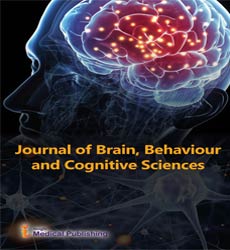Neurological Conditions like Pain, Neurodegenerative Diseases and Psychological Disorders
Lisbeth Nielsen*
Department of Behavioral and Social Research, National Institute on Aging, Bethesda, USA
- *Corresponding Author:
- Lisbeth Nielsen
Department of Behavioral and Social Research,
National Institute on Aging, Bethesda,
USA,
E-mail: Nielsen.lisbeth@gmail.com
Received date: August 04, 2023, Manuscript No. JBBCS-23-18036; Editor assigned date: August 09, 2023, PreQC No. JBBCS-23-18036 (PQ); Reviewed date: August 23, 2023, QC No. JBBCS-23-18036; Revised date: August 30, 2023, Manuscript No. JBBCS-23-18036 (R); Published date: September 06, 2023, DOI: 10.36648/jbbcs.6.3.24
Citation: Nielsen L (2023) Neurological Conditions like Pain, Neurodegenerative Diseases and Psychological Disorders. J Brain Behav Cogn Sci Vol.6 No.3: 24.
Description
The research that is carried out under the umbrella term molecular neuropharmacology which is also referred to in this context as neuro psychopharmacology focuses on the study of neurons, their neurochemical interactions and the receptors that are present on neurons. The ultimate objective of this research is the creation of new medications that will be used to treat neurological conditions like pain, neurodegenerative diseases and psychological disorders. When discussing the relationship between neurotransmission and receptor action, there are a few technical terms that must be understood. Agonist: A molecule that binds to a receptor protein and activates that receptor. Competitive antagonist: A molecule that binds to the same site on the receptor protein as the agonist, preventing activation of the receptor.
Neurotransmission and Receptor
Synthetic compounds that serve as one of the aforementioned three roles can have an impact on the following neurotransmitter/receptor interactions. In addition, action potential inhibition can be induced throughout a neuron by manipulating sodium/potassium ion channels. Parkinson's disease is a neurodegenerative disease described by the selective loss of dopaminergic neurons located in the Substantia Nigra. Today, the most commonly used drug to combat this disease is levodopa or L-DOPA. This precursor to dopamine can penetrate through the blood-brain barrier, whereas the neurotransmitter dopamine cannot. There has been extensive research to determine whether L-dopa is a better treatment for Parkinson's disease rather than other dopamine agonists. Some believe that the long-term use of L-dopa will compromise neuro protection and, thus, eventually lead to dopaminergic cell death. Though there has been no proof, in-vivo or in-vitro, some still believe that the long-term use of dopamine agonists is better for the patient. While there are a variety of hypotheses that have been proposed for the cause of Alzheimer's disease, the knowledge of this disease is far from complete to explain, making it difficult to develop methods for treatment. In the brain of Alzheimer's patients, both neuronal nicotinic acetylcholine receptors and NMDA receptors are known to be down-regulated. Structure activity relationships are a major area of research within neuropharmacology; an attempt to modify the effect or the potency (i.e., activity) of bioactive chemical compounds by modifying their chemical structures. Molecular neuropharmacology involves the study of neurons and their neurochemical interactions and receptors on neurons, with the goal of developing new drugs that will treat neurological disorders such as pain, neurodegenerative diseases and psychological disorders also known in this case as neuro psychopharmacology. During an action potential, sodium ions can enter the neuron and potassium ions can move outward through ion channels on the neuron's surface membrane. The likelihood of an action potential occurring will be reduced by selectively blocking these ion channels. Riluzole is a drug that protects the brain by blocking sodium ion channels. There is no action potential because these channels cannot be activated; additionally, the neuron does not convert chemical signals into electrical signals and the signal does not continue. This medication is also used to induce sedation.
Neuron and Potassium Ions
A subfield of behavioral neuropharmacology studies drug dependence and the psychological effects of addiction. The majority of studies have demonstrated that the nucleus accumbens is the major part of the brain that provides neurochemical rewards to reinforce addiction. Dopamine is projected into this area in the manner depicted on the right. Drinking too much alcohol for too long can lead to dependence and addiction. Selective serotonin reuptake inhibitors, are the medications that are most commonly used to control serotonin levels in depression. There were also drugs that inhibited the enzyme that breaks down serotonin prior to the discovery of SSRIs. These drugs inhibit the transport of serotonin back into the pre-synaptic neuron, leaving more serotonin in the synaptic gap. However, these drugs are not ideal due to their side effects and limited effectiveness. Nefiracetam, a promising drug being developed for the treatment of Alzheimer's disease and other dementia patients. Drug development will continue with increasing drug sensitivity and specificity as a result of technological advancements and our comprehension of the nervous system. The study of structure activity relationships is a major focus in neuropharmacology; an attempt to alter the effect or potency also known as activity of bioactive chemical compounds by altering the chemical structures of those compounds.
Open Access Journals
- Aquaculture & Veterinary Science
- Chemistry & Chemical Sciences
- Clinical Sciences
- Engineering
- General Science
- Genetics & Molecular Biology
- Health Care & Nursing
- Immunology & Microbiology
- Materials Science
- Mathematics & Physics
- Medical Sciences
- Neurology & Psychiatry
- Oncology & Cancer Science
- Pharmaceutical Sciences
